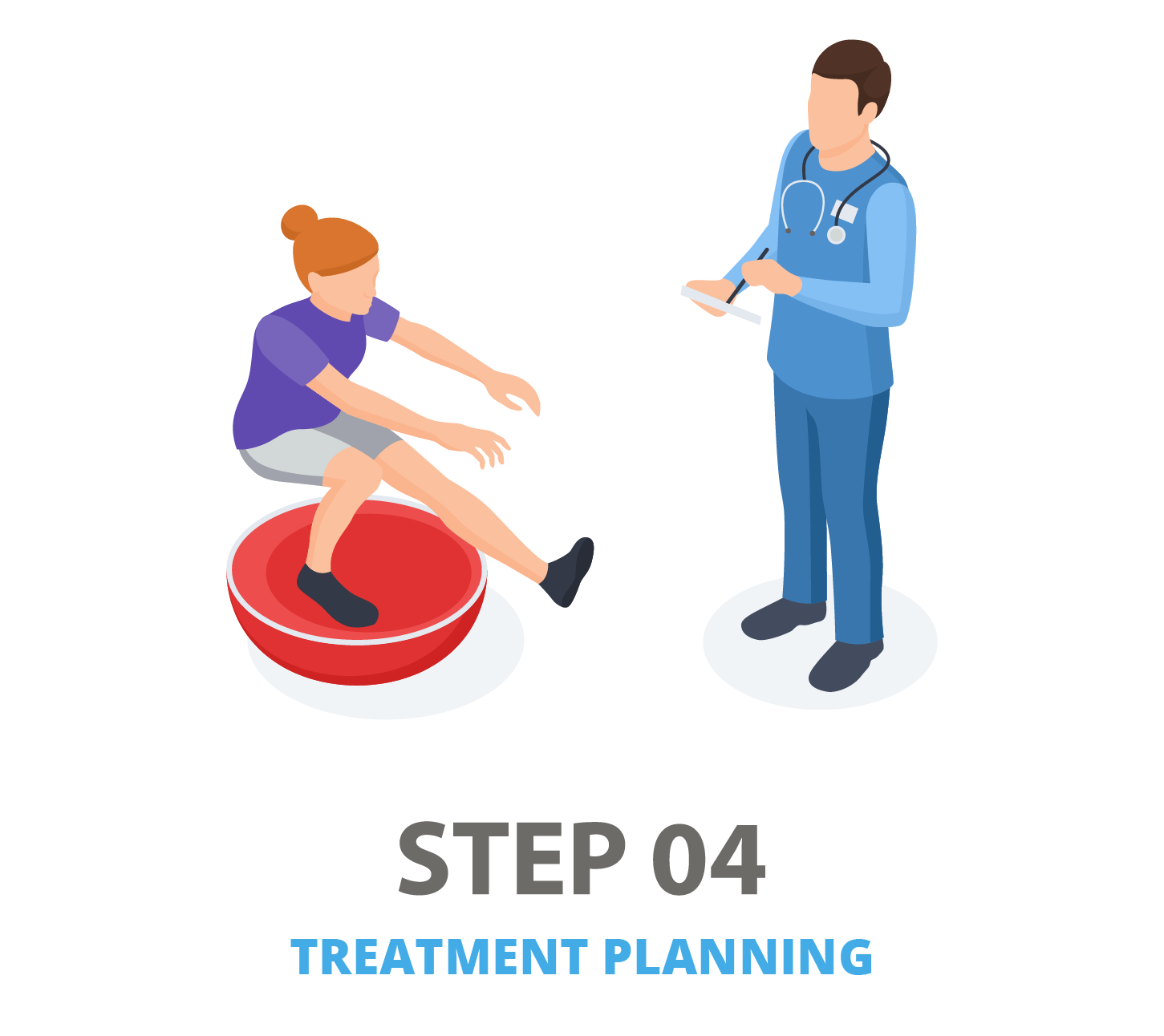Neurological Rehabilitation

Get back to normal
Neurological Rehabilitation
Overcoming Daily Challenges
Addressing a Spectrum of Issues
- Restoring mobility
- Regaining function and independence
- Reducing spasticity
- Decreasing the risk of falls
- Improving overall quality of life
Customized Treatment Plans
The path to overcoming limitations involves ongoing assessments and personalized treatment plans. The first step includes an in-depth conversation about symptoms, medical history, current limitations, and personal goals. Following this, a tailored treatment plan is developed, utilizing a wide range of services, including:
- Physiotherapy and exercise programs: Improving strength, endurance, coordination, balance, and mobility
- Occupational therapy: Assisting with daily task performance
- Mental health therapy: Addressing stress, anxiety, and depression
- Speech therapy: Enhancing communication skills
- Nutritional counseling: Focusing on dietary considerations
- Social work support: Retraining social and behavioral skills
- Bladder and bowel retraining: Addressing specific functional needs
- Home care consultations: Modifying living spaces for safety and independence
Customized Treatment Plans
The 9 step Rehabilitation process

Initially, a comprehensive assessment and evaluation of the patient’s condition are performed. The physical therapist collects detailed information about the patient's medical history, symptoms, and functional challenges. Physical examinations and tests are carried out to pinpoint the underlying problems.

Following the assessment, the physical therapist provides a diagnosis, identifying the primary issues and crafting a treatment plan tailored to the patient’s specific needs.

The physical therapist and patient collaborate to establish SMART (Specific, Measurable, Achievable, Relevant, Time-bound) goals. These objectives might involve enhancing range of motion, alleviating pain, building strength, and improving overall function.ilored to the patient’s specific needs.

A thorough treatment plan is created by the physical therapist, based on the assessment findings and established goals. This plan may encompass various approaches, including therapeutic exercises, manual therapy, modalities (such as heat or ice), and patient education

The treatment plan is actively implemented in this phase. Patients engage in exercises and activities designed to boost strength, flexibility, balance, and functional capabilities. Manual therapy techniques may also be utilized to address specific concerns.

The therapist consistently monitors the patient’s progress throughout the therapy. Adjustments to the treatment plan are made as needed, depending on the patient’s response and any changes in their condition.

Education plays a vital role in physical therapy. Patients are informed about their condition, body mechanics, and techniques for preventing future injuries. They may also receive instructions on home exercises.

A home exercise program is often provided to support the progress made during therapy sessions. Adhering to this program is crucial for achieving the best results.

As the patient advances, the focus may shift to functional training. This involves activities that simulate daily tasks, helping the individual regain the ability to perform everyday activities with greater ease.

1 - Assessment and Evaluation
Initially, a comprehensive assessment and evaluation of the patient’s condition are performed. The physical therapist collects detailed information about the patient's medical history, symptoms, and functional challenges. Physical examinations and tests are carried out to pinpoint the underlying problems.
2 - Diagnosis
Following the assessment, the physical therapist provides a diagnosis, identifying the primary issues and crafting a treatment plan tailored to the patient’s specific needs.
3 - Goal Setting
The physical therapist and patient collaborate to establish SMART (Specific, Measurable, Achievable, Relevant, Time-bound) goals. These objectives might involve enhancing range of motion, alleviating pain, building strength, and improving overall function.ilored to the patient’s specific needs.
4 - Treatment Planning
A thorough treatment plan is created by the physical therapist, based on the assessment findings and established goals. This plan may encompass various approaches, including therapeutic exercises, manual therapy, modalities (such as heat or ice), and patient education
5 - Therapeutic Interventions
The treatment plan is actively implemented in this phase. Patients engage in exercises and activities designed to boost strength, flexibility, balance, and functional capabilities. Manual therapy techniques may also be utilized to address specific concerns.
6 - Monitoring and Adjustments
The therapist consistently monitors the patient’s progress throughout the therapy. Adjustments to the treatment plan are made as needed, depending on the patient’s response and any changes in their condition.
7 - Patient Education
Education plays a vital role in physical therapy. Patients are informed about their condition, body mechanics, and techniques for preventing future injuries. They may also receive instructions on home exercises.
8 - Home Exercise Program
A home exercise program is often provided to support the progress made during therapy sessions. Adhering to this program is crucial for achieving the best results.
9 - Functional Training
As the patient advances, the focus may shift to functional training. This involves activities that simulate daily tasks, helping the individual regain the ability to perform everyday activities with greater ease.
Are you ready to start your healing Journey?
Book an Appointment
Our team of experts will accurately diagnosed and determine the most efficient healing Journey for your specific ailments. So what are you waiting for? Take the first step towards a pain-free and healthy life today!
